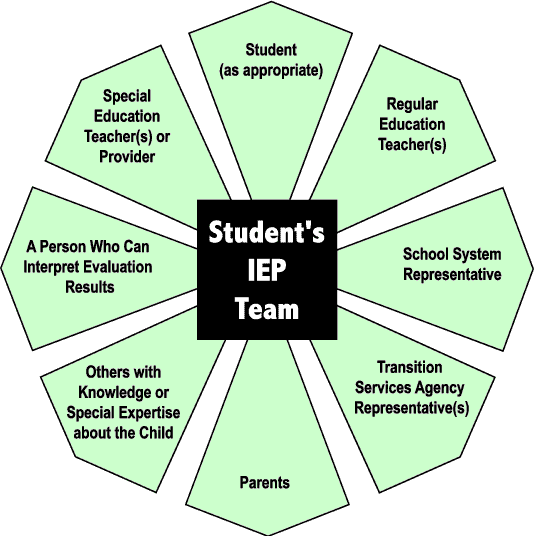Back to School Resources
Importance of Back to School Resources
Recognizing the importance of back-to-school resources is crucial for a smooth academic transition. These resources are designed to support students, parents, and educators in various ways. They offer essential tools and information to ensure a successful start to the new school year. From educational materials to organizational tools, these resources can help enhance learning experiences, promote organization, and alleviate stress associated with the back-to-school period. By utilizing these resources effectively, students can set themselves up for academic success, parents can stay informed and involved in their child’s education, and educators can facilitate a seamless teaching experience. It’s clear that back-to-school resources play a vital role in the overall academic journey.
Types of Back to School Resources Available


Students with Disabilities
New Guidance on Supporting Students with Disabilities
Overview of New Guidance
Understanding and implementing new guidance on supporting students with disabilities is paramount in creating an inclusive educational environment. The new guidance outlines best practices and legal requirements to ensure that students with disabilities receive the necessary support and accommodations to thrive academically. By following this guidance, schools can foster a more equitable and accessible learning environment for all students.
Strategies for Implementing New Guidance
To effectively implement the new guidance on supporting students with disabilities, schools can start by conducting thorough assessments of individual needs, collaborating with parents and specialists, and providing appropriate training for educators. Additionally, creating a supportive and positive school culture that celebrates diversity and inclusivity is essential for successful implementation. By adopting these strategies, schools can create a more welcoming and supportive environment for students with disabilities.

Implementing Inclusive Education Practices
Significance of Inclusive Education
Guidelines for Establishing Inclusive Learning Environments
Blog Section:Understanding and effectively implementing inclusive education practices is crucial in fostering an environment where all students, including those with disabilities, can thrive academically and socially. The guidelines aim to create educational settings based on equality, respect, and support for every student’s individual needs. By adhering to these principles, schools can cultivate a culture that values diversity and inclusivity. To successfully implement inclusive education practices, schools should conduct comprehensive assessments, collaborate with stakeholders, and provide ongoing training for educators. Furthermore, establishing a positive and welcoming school environment that celebrates differences is key to supporting students with disabilities. By following these guidelines, schools can create an environment that nurtures the growth and success of all students.

Technology Tools for Students with Disabilities
Assistive Technology Overview
Popular Tech Tools for Students with Disabilities
Understanding the importance of incorporating technology tools for students with disabilities is paramount in creating inclusive learning environments. By utilizing assistive technology, schools can provide students with disabilities the support they need to excel academically and participate fully in educational activities. Assistive technology encompasses a wide range of devices, software, and tools designed to help individuals with disabilities overcome barriers to learning. Some popular tech tools include text-to-speech software, screen readers, speech recognition software, and adaptive keyboards. These tools enable students to access information, communicate effectively, and engage in learning activities more independently. By implementing such technology tools, schools can empower students with disabilities to reach their full potential and succeed in their academic pursuits.

Understanding Individualized Education Plans (IEPs)
Purpose and Components of IEPs
Tips on Collaborating for Effective IEP Implementation
Blog Section:When it comes to ensuring that students with disabilities receive the necessary support and resources in educational settings, Individualized Education Plans (IEPs) play a crucial role. An IEP is a personalized plan created for students with special needs to outline their specific goals, learning needs, and the services they require to succeed academically. These plans are tailored to address the unique requirements of each student and provide a roadmap for educators to follow.The purpose of an IEP is to identify the student’s current academic performance, set achievable learning objectives, and establish a framework for monitoring progress. Components of an IEP typically include the student’s present levels of performance, measurable goals, special education services, accommodations, and modifications.Collaboration among teachers, parents, special education professionals, and the student is essential for effective IEP implementation. By working together, stakeholders can ensure that the plan is comprehensive, realistic, and supportive of the student’s educational needs. Regular communication, goal-setting, and progress monitoring are key aspects of successful collaboration in implementing IEPs.

Addressing Behavior Management in Special Education
Positive Behavior Support Approaches
Creating Behavior Intervention Plans
Blog Section:When it comes to promoting positive behavior in special education settings, addressing behavior management is crucial. Implementing positive behavior support approaches is key to creating a conducive learning environment. These strategies focus on reinforcing desired behaviors through incentives, teaching alternative behaviors, and providing necessary support.Creating behavior intervention plans (BIPs) is another essential aspect of behavior management. BIPs are personalized plans developed to address challenging behaviors effectively. They include identifying triggers, outlining strategies to prevent unwanted behaviors, and detailing interventions to address them when they occur.Collaboration among educators, parents, and behavior specialists is vital for successful behavior management in special education. By working together and implementing tailored strategies, stakeholders can support students in improving their behavior and achieving academic success.

Enhancing Family Engagement in Special Education
Importance of Family Involvement
Tips for Building Strong School-Family Partnerships
Blog Section:When it comes to special education, enhancing family engagement is paramount. The involvement of families in a child’s educational journey can significantly impact their success. By actively engaging families, educators can gain valuable insights into the student’s needs, preferences, and behaviors, leading to more tailored support strategies. Collaborating with families also fosters a sense of inclusivity and teamwork, creating a holistic support system for the student.To build strong school-family partnerships, it is crucial to establish open communication channels, encourage parental involvement in decision-making processes, and provide resources and support for families. By working together, educators and families can create a supportive environment where students can thrive academically and socially.

